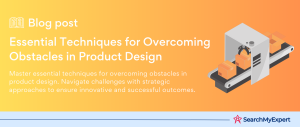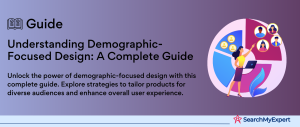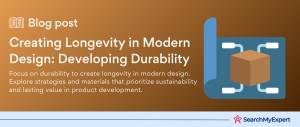Dive Deep into Design: Unveiling the Power of Product Design Case Studies
In the dynamic world of digital innovation, product design stands at the forefront, shaping how we interact with technology and each other. Product design case studies emerge as crucial tools in this landscape, offering insights, inspiration, and practical knowledge. They’re not just stories; they’re blueprints for success and learning.
The Essence of Case Studies in Design
Imagine peering over the shoulder of a master craftsman. That’s what a case study in product design feels like. It’s a journey through the creative process, a deep dive into the nuts and bolts of design thinking.
Why Case Studies Matter
- Learning from the Best:
They offer a behind-the-scenes look at how top designers solve complex problems. - Tool for Innovation: By studying various approaches, designers, and businesses can innovate and improve their own products.
- User-Centric Focus:
These studies highlight the importance of user experience (UX) and user interface (UI) design in creating successful products.
For Designers
For designers, these case studies are like a masterclass. They provide a wealth of knowledge, showcasing different styles, techniques, and problem-solving methods. It’s about understanding the ‘why’ behind each design decision.
For Businesses
Businesses can glean how good design directly contributes to product success. It’s a roadmap to understanding market needs, customer behavior, and design’s impact on the bottom line.
For Users
Users might not delve into case studies, but they reap the benefits. Good design enhances usability, satisfaction, and engagement, making digital products a joy to use.
The Structure of a Great Case Study
Great case studies share a few common traits:
- Problem Statement: Clearly defines the challenge faced.
- Design Process:
Details the journey from concept to final product. - Outcome and Reflection: Showcases the end result and lessons learned.
The Journey Ahead
As we explore these case studies, we’ll witness the transformation of ideas into tangible, user-centric products. They’re stories of challenges, innovation, and success. Let’s embark on this journey to unlock the full potential of product design.
Cracking the Code
Understanding Case Studies
Navigating through the world of product design, one often stumbles upon the term ‘case study.’ But what really makes a great product design case study? It’s a narrative, a story of transformation, a testament to innovation and user-centric design.
The Backbone of a Case Study
Project Background
- Setting the Stage: Understanding the context, the client, and the market.
- Defining the Vision: What was the initial vision or goal of the project?
Design Challenges & Goals
- Identifying the Hurdles:
What problems were they aiming to solve? - Setting Clear Objectives: The goals that guided the design process.
Research & User Insights
- Digging Deeper: Conducting thorough market research, user interviews, and surveys.
- User Personas:
Creating detailed profiles of the target users.
Design Process & Iterations
- Brainstorming and Ideation:
How the initial ideas were generated. - Prototyping and Testing:
Creating multiple iterations and refining them based on feedback.
Final Product & Design Solutions
- The Big Reveal: Showcasing the final design.
- Solution Highlights: Specific design features and functionalities that stand out.
Results & Impact
- Measuring Success: How the design impacted the client’s business, user satisfaction, etc.
- Lessons Learned:
Key takeaways and insights gained from the project.
The Storytelling Aspect
A great case study is also about storytelling. It’s about weaving a narrative that not only showcases the design but also engages and educates the reader.
The Educational Role
These studies serve as a learning tool for both budding and seasoned designers, offering a treasure trove of insights and best practices.
Beyond Showcasing Work
Benefits of Case Studies
Product design case studies aren’t just about showcasing work; they’re powerful tools for designers and businesses alike, offering a multitude of benefits.
For Designers: Building a Strong Portfolio
Showcase of Skills and Expertise
- Demonstrating Versatility: Showcasing a range of skills from research to final design.
- Problem-Solving Abilities:
Highlighting how design challenges were overcome.
Attracting New Opportunities
- Job Prospects:
A strong case study can catch the eye of potential employers. - Client Engagement:
Displaying past successes to attract new clients.
For Businesses: Gaining User Insights
Improving Product Design
- User-Centric Approach:
Understanding user needs and preferences to refine products. - Innovation and Adaptation: Using insights to innovate and stay ahead of market trends.
Showcasing Success
- Investor Attraction:
Demonstrating proven success to attract funding and partnerships. - Brand Image: Building a reputation for excellence in design.
The User Experience
Enhanced User Satisfaction
- Feedback Integration: Using case studies to understand and integrate user feedback.
- Better Usability:
Focusing on user-friendly design to enhance the overall experience.
Market Impact
- User Loyalty: Products that resonate with users create lasting loyalty.
- Market Positioning: Establishing a brand as a leader in user-centric design.
Where the Magic Happens
Finding Inspiration
The quest for inspiration in product design often leads to the exploration of existing case studies. But where do you find these gems? Let’s dive into the reservoirs of creativity and innovation.
Online Resources: A Treasure Trove
Design Agency Websites
- Portfolios of Success:
Agencies often showcase their best work, providing real-world examples of design excellence. - Diverse Industries: Gain insights into how design principles are applied across various sectors.
Design Blogs and Publications
- Latest Trends and Techniques:
Stay updated with the evolving world of design. - Expert Opinions: Articles and interviews with leading designers offer valuable perspectives.
Case Study Platforms
- Dribbble and Behance: Platforms where designers share their work, offering a window into their creative process.
- Community Interaction:
Engage with designers, ask questions, and gain deeper insights.
Award Websites
- Awwwards and Red Dot: Recognized platforms that highlight award-winning designs.
- Benchmark of Excellence: Understanding what constitutes an award-winning design can set a high bar for aspiring designers.
The Role of Social Media
- Instagram and LinkedIn: Often overlooked, these platforms can be rich sources of case studies and design inspiration.
Local Design Meetups and Conferences
- Networking and Knowledge Sharing:
Interacting with fellow designers can lead to unexpected sources of inspiration.
From Blank Canvas to Masterpiece
Crafting Your Own Case Study
Creating your own product design case study is a transformative process. It’s not just about showcasing a project but narrating a journey of creativity, challenge, and solution. Let’s delve deeper into the steps involved.
Planning & Preparation: Laying the Groundwork
Choose the Right Project
- Impact Factor:
Select a project with significant challenges and innovative solutions. - Personal Contribution: Ensure it’s a project where your role was pivotal.
Define Your Target Audience
- Understand Your Readers:
Tailor your case study for fellow designers, potential clients, or industry peers. - Customize Your Approach: The narrative style, technical depth, and focus should resonate with your audience.
Gather Relevant Data and Assets
- Comprehensive Collection:
Assemble all documents, from briefs to final deliverables. - Visuals and Metrics:
Include sketches, prototypes, and user feedback to add depth.
Writing & Visualizing: Crafting the Narrative
Craft a Compelling Narrative
- Engaging Introduction: Start with an intriguing angle to draw readers in.
- Story Arc: Maintain a clear and logical flow from the problem to the solution.
Use Clear and Concise Language
- Simplicity Wins: Avoid jargon to keep it accessible.
- Descriptive Clarity:
Clearly explain the design decisions and their impact.
Include Impactful Visuals and Data
- Visual Storytelling: Use images and graphics to complement the text.
- Data-Driven Insights: Incorporate metrics to substantiate your design outcomes.
Seeing is Believing
Case Studies in Action: Real-World Examples
Exploring real-world product design case studies can be enlightening. They offer a window into the creative process of some of the most innovative designers and projects. Let’s look at a few inspiring examples.
Uber Scooters Platform by Bre Huang
- The Challenge:
Integrating scooters into the existing Uber ecosystem. - The Solution: A seamless design that enhances user experience while maintaining brand consistency.
- The Impact:
Improved accessibility and user engagement with Uber’s multi-modal transportation options.
Apple Music Redesign by Jason Yuan
- The Goal:
Revamping the user interface to make it more intuitive and engaging. - The Approach:
Focused on simplifying navigation and enhancing the visual appeal. - The Results: A more user-friendly platform that aligns with Apple’s aesthetic and functional standards.
Duolingo Redesign by Michael Bungay Stanier
- The Objective:
To make language learning more engaging and effective. - The Design Strategy: Introducing gamification elements and a more personalized user journey.
- The Outcome:
Increased user retention and a more enjoyable learning experience.
The Case for Continuous Learning
As we wrap up our exploration of product design case studies, it’s clear that they are more than just a showcase of past achievements. They are a catalyst for continuous learning and inspiration in the ever-evolving world of design.
The Ongoing Value of Case Studies
- Learning and Adapting: Case studies offer timeless lessons, adaptable to new challenges and technologies.
- Source of Inspiration:
They provide endless inspiration, fueling creativity and innovation in design.
Encouragement for Designers
- Explore Uncharted Territories:
Dive into diverse case studies to broaden your horizons. - Contribute to the Community: Share your own experiences and learnings through case studies.
For the Future of Design
- Evolving Best Practices: Case studies help in evolving design methodologies and best practices.
- Building a Knowledge Base: Each case study adds to the collective knowledge of the design community.
Conclusion
Product design case studies are invaluable assets in the world of design. They encourage us to learn, adapt, and innovate. As designers, we should continually engage with these studies, contribute to them, and use them as stepping stones in our journey of growth and creativity.
Maximize your product’s appeal with our Product Designing Services.
Table of Contents
Toggle






